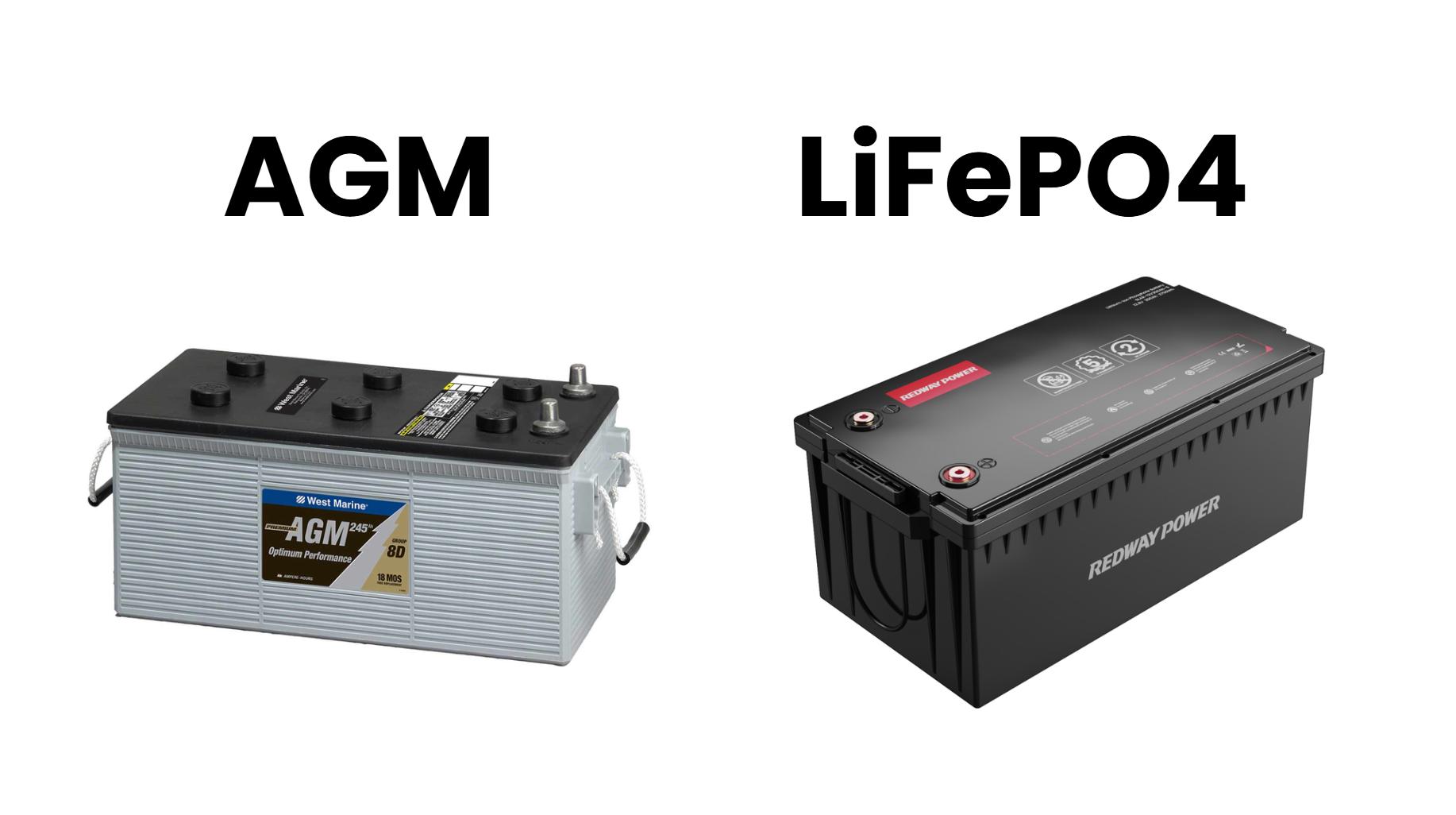AGM (Absorbent Glass Mat) marine batteries use fiberglass mats to absorb and immobilize sulfuric acid electrolyte, eliminating free liquid. This design ensures spill-proof operation, deep-cycle performance, and resistance to vibration. Ideal for marine use, they handle repeated discharges and recharges efficiently, making them suitable for trolling motors, electronics, and emergency systems on boats.
What Are the Benefits of AGM Marine Batteries?
AGM marine batteries offer maintenance-free operation, high durability, and faster recharge rates compared to flooded lead-acid batteries. They withstand extreme temperatures, resist corrosion, and provide consistent power output. Their sealed design prevents acid leaks, making them safe for confined spaces. Deep-cycle AGM variants excel in powering accessories over long periods without performance drops.
How Do AGM Batteries Compare to Gel or Flooded Lead-Acid Batteries?
AGM batteries outperform gel batteries in charge acceptance and power density, while surpassing flooded batteries in vibration resistance and maintenance needs. They operate efficiently in partial-state-of-charge conditions, unlike gel batteries. Flooded batteries require regular water refilling and venting, whereas AGM units are sealed and leak-proof, ideal for marine environments.
How to Choose the Right AGM Marine Battery for Your Boat?
Prioritize capacity (Ah), cranking amps (MCA/CCA), and physical size. Match the battery to your engine’s starting requirements and accessory power needs. For dual-purpose use (starting + deep cycling), select hybrid AGM models. Check compatibility with charging systems—AGM batteries require voltage-regulated chargers to avoid overcharging.
How to Maintain AGM Marine Batteries for Longevity?
Keep terminals clean and tight, avoid deep discharges below 50%, and store batteries fully charged. Use a smart charger with AGM-specific profiles. Inspect for physical damage annually. Unlike flooded batteries, AGMs don’t need electrolyte checks, but improper charging (over 14.7V) can cause gas venting and reduce lifespan.
How to Install AGM Marine Batteries Safely?
Secure batteries in upright positions using corrosion-resistant trays. Ensure proper ventilation despite their sealed design—heat buildup shortens life. Connect terminals with marine-grade cables and apply anti-corrosion spray. Avoid placing near fuel lines or heat sources. Follow manufacturer torque specs to prevent terminal damage.
What Is the Lifespan of AGM Marine Batteries?
Properly maintained AGM batteries last 4–7 years. Factors like depth of discharge, charging habits, and temperature extremes impact longevity. Partial cycling (30–50% discharge) extends life, while frequent deep discharges below 80% accelerate wear. Regular voltage checks and avoiding sulfation through timely recharging are critical.
How Do AGM Batteries Perform in Extreme Marine Environments?
AGM batteries excel in harsh conditions. Their vibration-resistant design suits rough waters, while sealed construction prevents saltwater corrosion. They operate between -40°F and 140°F, though performance dips at extremes. Insulate batteries in freezing climates to preserve capacity. Salt spray-resistant terminals are recommended for coastal use.
What Are the Environmental Impacts of AGM Marine Batteries?
AGM batteries are 97–99% recyclable. Lead plates and polypropylene cases are reclaimed in closed-loop systems. Their sealed design minimizes acid spills, reducing ecological risks. However, improper disposal releases lead into ecosystems. Always recycle through certified centers—retailers often offer take-back programs.
How to Troubleshoot Common AGM Marine Battery Issues?
Symptoms like slow cranking or voltage drops often stem from sulfation (due to undercharging) or loose connections. Test voltage (12.6V+ when charged) and load capacity. If below 12V, use a desulfator charger. For swelling, replace immediately—internal shorts may cause thermal runaway. Persistent low voltage indicates cell failure requiring professional assessment.
Expert Views
“AGM technology revolutionized marine power systems by combining safety with deep-cycle resilience. At Redway, we’ve seen 30% fewer failure claims compared to flooded batteries, especially in saltwater applications. The key is pairing them with modern charging systems—many boaters overlook this, leading to premature aging.” — Redway Power Solutions Marine Division
Conclusion
AGM marine batteries provide unmatched reliability for boaters needing maintenance-free, durable power. Their spill-proof design, deep-cycle capability, and environmental resilience make them superior to traditional options. By following proper charging protocols and storage practices, users can maximize their investment over years of service.
FAQs
Q: Can AGM marine batteries be used as starting batteries?
A: Yes, dual-purpose AGM batteries deliver high cranking amps for engine starts while supporting deep-cycle accessory use.
Q: Do AGM batteries require special chargers?
A: Yes—use chargers with AGM profiles (14.4–14.7V absorption) to prevent overcharging. Avoid old unregulated chargers.
Q: Are AGM batteries safe for indoor boat cabins?
A: Absolutely. Their sealed, valve-regulated design emits minimal hydrogen gas, eliminating explosion risks in enclosed spaces.




